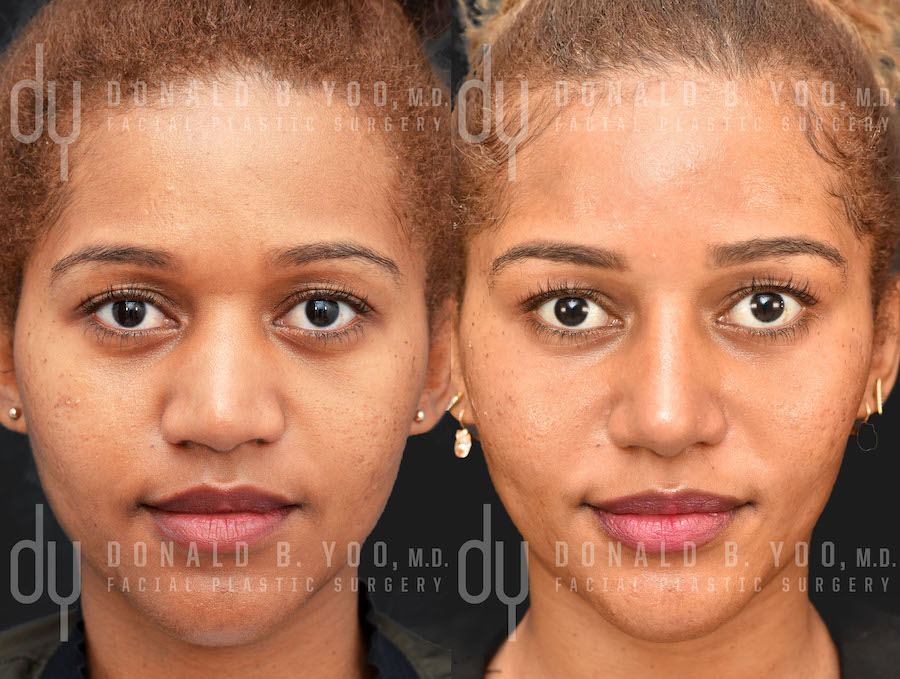
Surgeons have attempted to rebuild and reshape the nose in myriad ways throughout the ages. The earliest forms of rhinoplasty trace back to the rudimentary Indian forehead flaps, followed by French lateral cheek flaps. Attempts at augmenting the nose using non-autologous and and autologous materials followed, with varying degrees of success. Dr. Gary Burget and Dr. Fred Menick made a significant advancement in the way to conceptualize rhinoplasty and nasal surgery by publishing on the nasal subunit principle of nasal reconstruction. In this seminal book on rhinoplasty they described the fundamentals to accurately assess and analyze a nose in terms of form and function.
An interesting, and certainly prescient, observation by Dr. Burget remains, “No sooner has the result been created on the operating table than it begins to change.” The 4th dimension of time presents perhaps the biggest variable and challenge to every rhinoplasty surgeon, and for every patient undergoing nose job surgery. Dr. Burget’s sentiment hints at the intrinsic variability between the shape of the nose the operating surgeon creates, and the shape of the nose that ultimately persists. It stands to reason, then, that some techniques and maneuvers in rhinoplasty present a higher chance of permanence and withstanding changes through time, while some surgical techniques and approaches may suffer from more susceptibility to changes and distortions with time and aging.
While an exhaustive list might be excessive for this format, I’ll highlight some techniques here:
- Transdomal or dome binding sutures
- While these remain the workhorse of tip-narrowing in many primary rhinoplasty cases, they remain a double-edged sword in that they can cause the tip cartilage (lower lateral cartilage) to twist and turn over time, creating bossa and contour irregularities especially in thin-skinned patients. These suture techniques work best when used in combination with techniques to stabilize tip rotation and projection, and when tightened conservatively. Aggressive narrowing of the nasal tip with transdomal or interdomal sutures creates concavity and weakness along the lateral crura which manifests in weakening of the alar rims over time, and a resultant “pinched” nose appearance.
- Dorsal hump reduction without middle vault reconstitution
- Nasal bones comprise the upper third of the nasal dorsum or bridge, and the upper lateral cartilages with the dorsal septum, comprise the middle third of the dorsum, also referred to as the middle vault. In patients with bumps on the bridge of the nose, or dorsal humps, the hump is reduced by removing some portion of bone and cartilage to eliminate the convexity along the profile, typically for a straighter profile. This represents one of the most fundamental rhinoplasty maneuvers, and may be easily executed by rhinoplasty surgeons of all experience levels. Unfortunately, some nose job surgeons will overlook one critical nuance of nasal hump reduction, which is the preservation or restoration of the connection between the nasal bones and dorsal septum (keystone area) as well as the attachments of the upper lateral cartilages to the dorsal septum. When a surgeon removes bone and cartilage from the dorsum of the nose, these attachments frequently become disrupted and weakened. Over time the upper lateral cartilages may descend and narrow, creating internal nasal valve collapse, or the dreaded inverted-V deformity in severe cases. When a surgeon disrupts the keystone area the nasal dorsum or bridge can become discontinuous as the septum and nasal bones separate over time, creating a dip along the bridge or a saddle-nose deformity
Two techniques rooted in rhinoplasty fundamentals, but with definite nuances to consider for a successful surgery outcome.
 Contact Us
Contact Us